
How to make mozzarella
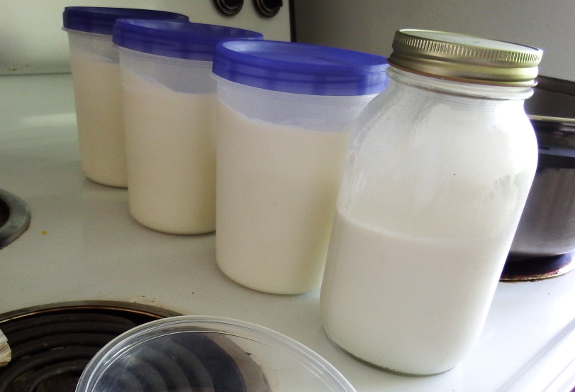
My first try with
mozzarella tasted and looked a little funny since I used balsamic
vinegar to acidify the milk. (That was the only acid I had in the
house.) But after a trip to the store to pick up a bottle of lemon
juice, my second attempt came together quite easily. Total time: 30
minutes active, 2 hours total in the kitchen, 3 days wait on the milk.
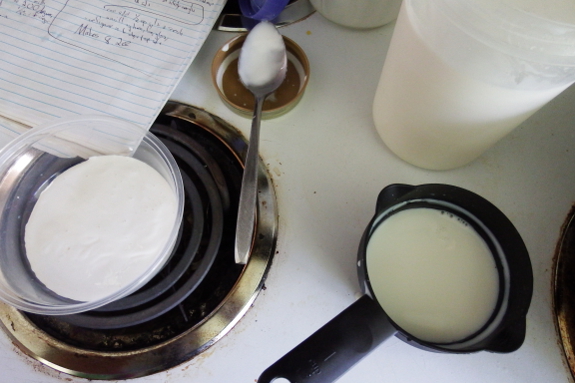
First of all, Leigh warns not to try to make mozzarella until goat's milk is at least three days old.
So I started a careful milk-aging system in the fridge --- new jars
went in the right side, wrapped around the back, and we drank out of the
jar in the front left. The great part about aging the milk before
turning it into cheese is that I was able to skim off enough cream to
whip as berry topping. Yum!
(Edited to add: I made this later with the cream left in, and I have to
admit that whole mozzarella was tastier than skim mozzarella. So you
might consider skipping the skimming step.)
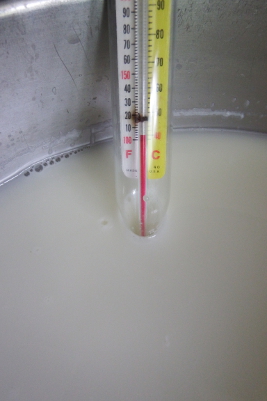 Okay,
back to the point. I poured eight
cups of three-day-old milk into a stainless-steel pot. Next, I mixed 1/4 cup of lemon juice
(bottled) with one cup of water and poured that mixture into the milk,
stirring well.
Okay,
back to the point. I poured eight
cups of three-day-old milk into a stainless-steel pot. Next, I mixed 1/4 cup of lemon juice
(bottled) with one cup of water and poured that mixture into the milk,
stirring well.
The next step was to warm
the milk to 90 degrees Fahrenheit. My jelly thermometer doesn't go down
that low, so I used the inside-of-your-wrist test that is recommended
for warming water for bread-yeast proofing.
Once the milk was warm, I
mixed 1 drop of liquid rennet into 1/4 cup of cold water. Our raw goat milk requires very little rennet, so I then poured half
of the rennet-water mixture into my acidified milk. In other words, I
ended up only using half a drop of rennet for this recipe, which makes
the mozzarella come out at more the consistency I was looking for than
the harder, chewier cheese resulting from following a recipe.
After mixing the rennet-water into the
acidified milk, I was ready for the first waiting step --- 1 hour for
curds to form.
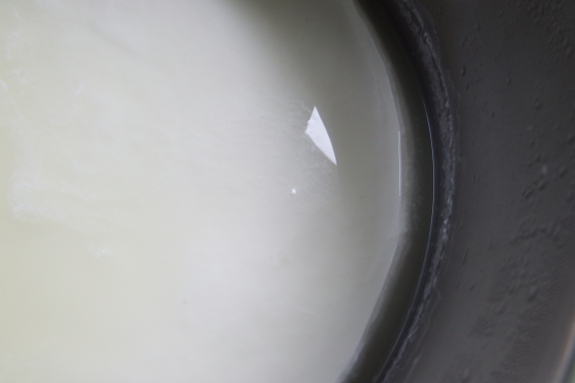
When you gently tilt your
pot of proto-mozzarella and the clearish whey slides away from the
solid curd, you're ready to move on to the next stage. Use a knife to
cut the curd into squares, then put the pot back on the stove over
medium-low heat.
This is where the candy
thermometer comes into play. Your goal is to achieve a temperature of
105 to 108 degrees Fahrenheit, then to hold your liquid at that
temperature
(stirring every five minutes) for thirty-five minutes. During this time,
the curds will shrivel and clump together to form a substance much more
like mozzarella. Be careful because I feel like overdoing the heat here
makes the mozzarella a little chewier than I would have liked.
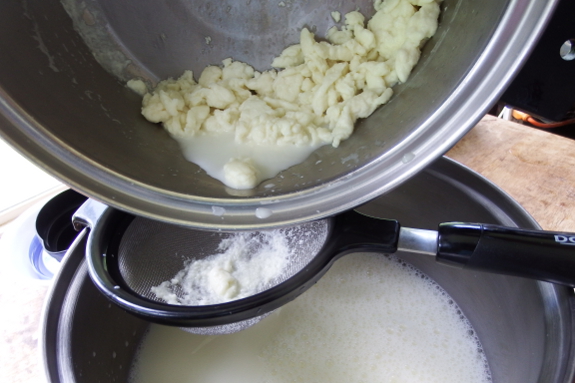
Now strain the curds from the whey by passing the contents of your pot through a stainless-steel sieve.
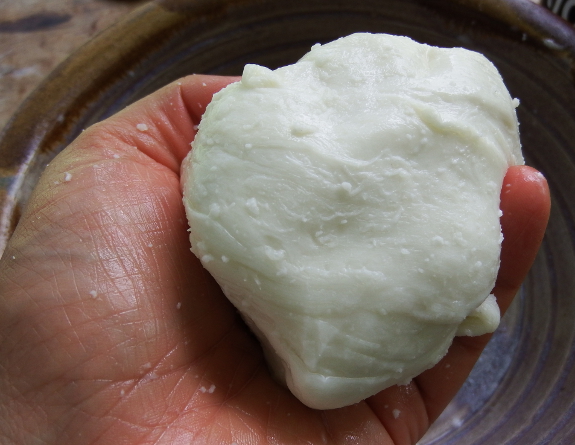
Add 1/4 teaspoon of salt
to the curds, then put them in the microwave (in a microwavable dish)
for between 30 seconds. The mozzarella should melt enough
to be stretched and easily formed into a ball. If not, put it back in
for 15 to 30 seconds before stretching a few times and calling the
cheese done.
The result is about six ounces of cheese from two quarts of milk, with the possibility to get more cheese out of the whey later. All told, mozzarella seems a bit more wasteful of milk than cultured cheeses,
but it's definitely quick and easy. In fact, there's a 30-minute
version knocking around the web that cuts out some of these steps, if you don't mind trading a bit of flavor for time.
What fun to add another homemade cheese to my arsenal!
Want more in-depth information? Browse through our books.
Or explore more posts by date or by subject.
About us: Anna Hess and Mark Hamilton spent over a decade living self-sufficiently in the mountains of Virginia before moving north to start over from scratch in the foothills of Ohio. They've experimented with permaculture, no-till gardening, trailersteading, home-based microbusinesses and much more, writing about their adventures in both blogs and books.
Want to be notified when new comments are posted on this page? Click on the RSS button after you add a comment to subscribe to the comment feed, or simply check the box beside "email replies to me" while writing your comment.
